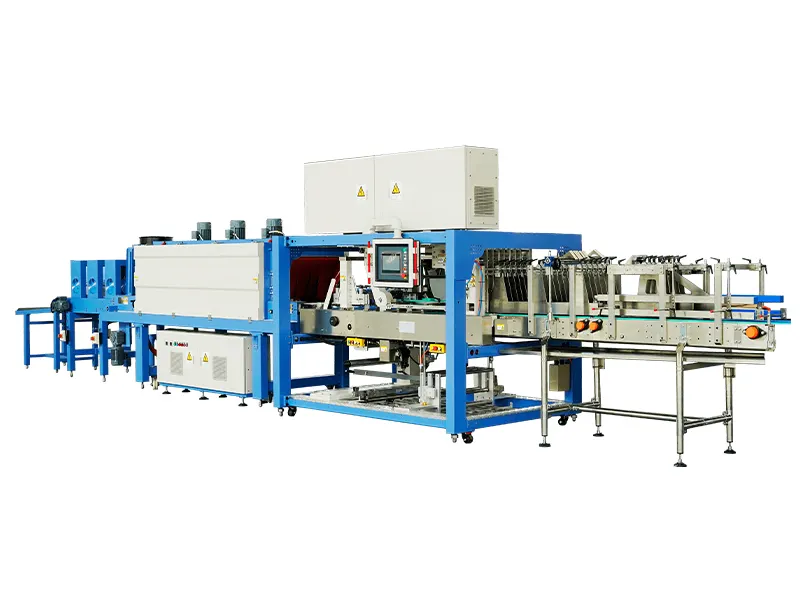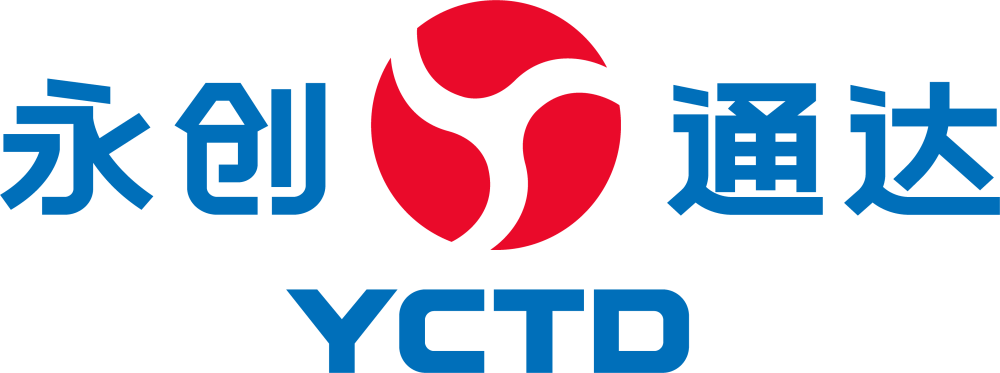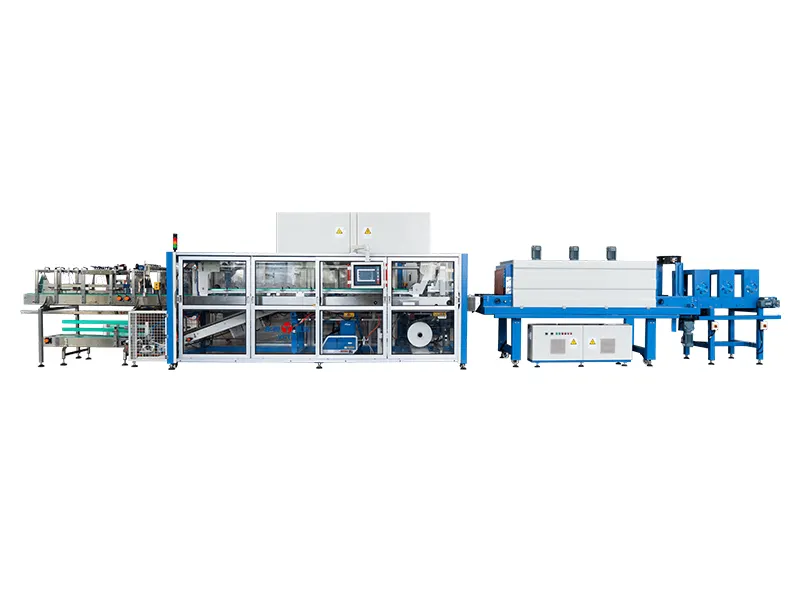Improving Beverage Line Efficiency in a Competitive Market
In today’s beverage manufacturing landscape, optimizing every part of the production chain is no longer optional. Speed, quality, and cost-efficiency define the competitiveness of a beverage producer. Investing in reliable and well-configured beverage line production systems has become essential for companies aiming to stay agile, reduce waste, and increase output. These systems play a pivotal role in ensuring that every step, from filling to labeling and packaging, operates in harmony.
Whether you are launching a new beverage line or upgrading an existing one, the choice and configuration of your beverage line production systems directly impact your product quality, output volume, and operational costs. Understanding how to refine this setup for maximum productivity allows manufacturers to meet changing demands while maintaining consistency.
System Design and Configuration
Line Layout and Workflow Coordination
An efficient beverage line production system begins with the layout. Properly aligning machines, conveyors, and workstations minimizes idle time and material handling. Straight-line layouts or U-shaped configurations are commonly used depending on space constraints and product flow. Workflow coordination ensures that upstream and downstream machines operate in sync, avoiding bottlenecks.
Synchronizing each segment of the production line is essential for reducing delays and enhancing throughput. Line balancing and real-time monitoring can help identify inefficiencies and streamline operations further.
Equipment Customization and Compatibility
Each product requires specific handling. Carbonated beverages, still water, or dairy products each have unique bottling and sealing requirements. Equipment must be tailored accordingly, from rinsers to fillers and cappers. Choosing machines that are compatible with multiple bottle sizes or container types adds flexibility and reduces downtime during changeovers.
Customization ensures that beverage line production systems handle delicate or complex packaging demands with precision, resulting in better product integrity and customer satisfaction.

Automation and Technology Integration
Smart Sensors and IoT Monitoring
The integration of smart technology into beverage line production systems has transformed how facilities operate. Sensors track temperature, pressure, flow rates, and fill levels with real-time accuracy. IoT-enabled systems allow remote diagnostics and predictive maintenance, reducing unplanned downtime.
Automation not only boosts speed but also minimizes human error, leading to consistent output and improved product quality. Data-driven insights can guide further improvements and help maintain performance benchmarks.
Robotic Arms and Automated Conveyors
Automation also includes robotic solutions for repetitive tasks like case packing, palletizing, or sorting. Robotic arms reduce manual labor costs while increasing consistency and speed. Automated conveyor systems ensure smooth transitions between stages, reducing spillage or product mishandling.
Integrating robotics into beverage line production systems helps manufacturers scale up production and remain responsive to market trends without compromising reliability.
Maintenance and Operational Continuity
Preventative Maintenance Planning
Breakdowns are a costly setback. Implementing a preventative maintenance schedule ensures that every component in your beverage line production systems is routinely inspected and serviced. This includes lubrication, part replacements, and software updates.
Maintenance protocols reduce downtime, prevent equipment failure, and extend the lifespan of your systems. Operators should be trained to recognize early warning signs and act promptly.
Spare Parts and Technical Support
Maintaining an inventory of critical spare parts can significantly reduce repair times. Working with equipment providers that offer responsive technical support and local servicing options ensures fast resolution of any issues.
An efficient support system safeguards continuity, allowing production to resume quickly in the event of a malfunction.
Bottling, Capping, and Labeling Precision
Consistent Fill Accuracy
Inaccurate filling can result in product loss, inconsistent flavor profiles, or consumer dissatisfaction. Beverage line production systems must incorporate high-precision filling heads capable of adjusting to product viscosity and container volume in real time.
Advanced systems use flow meters, volumetric sensors, or weight-based filling to maintain precision and reduce waste.
Secure Sealing and Branding
Capping machines must provide airtight and tamper-proof seals, particularly for carbonated drinks or health-sensitive beverages. Labeling machines should apply labels without wrinkles or misalignment, contributing to consistent branding.
Seamless integration of these systems ensures that each product looks and performs as intended, reinforcing brand trust.
Energy Efficiency and Sustainability
Reducing Energy Consumption
Modern beverage line production systems prioritize energy efficiency. Using energy-efficient motors, LED-based inspection systems, and optimized heating processes for shrink-wrapping or pasteurization reduces electricity consumption.
Energy audits and equipment upgrades can further reduce environmental impact while lowering operational expenses.
Waste Minimization and Recyclable Packaging
Automation helps reduce packaging waste by using precise film cutting, bottle filling, and sealing techniques. Systems that accommodate recyclable materials also support sustainability initiatives.
Beverage manufacturers are increasingly adopting eco-friendly practices, and efficient systems help align with these goals without compromising productivity.
Flexibility and Scalability
Quick Changeover Capabilities
As product lines diversify, beverage line production systems must allow rapid changeovers between formats, flavors, or packaging types. Modular machines with programmable settings and quick-release mechanisms enable fast transitions without reconfiguration delays.
Changeover efficiency is crucial for small-batch production, seasonal variations, or limited-edition releases.
Expansion Without Downtime
Systems designed with scalability in mind support expansion without halting operations. Additional filling lines, capping machines, or inspection stations can be added modularly. This flexibility ensures businesses can grow their production capacity without starting from scratch.
Scalability is particularly important for startups planning to expand or large companies exploring new market segments.
Quality Control and Compliance
Inline Inspection Systems
Inline inspection systems detect underfilled bottles, damaged caps, misaligned labels, and contamination. Cameras, X-rays, or infrared sensors help identify and reject faulty products without disrupting the line.
Incorporating these inspection tools directly into beverage line production systems ensures consistent output quality and minimizes product recalls.
Meeting Industry Standards
Beverage production must comply with local and international safety, hygiene, and labeling regulations. Systems should be constructed from food-grade materials, include CIP (clean-in-place) functionality, and adhere to HACCP principles.
Staying compliant not only avoids legal issues but also protects consumer health and maintains brand reputation.
Cost Optimization and ROI
Labor and Time Savings
By automating repetitive tasks and reducing manual intervention, beverage line production systems lower labor costs. Faster cycle times increase production capacity, enabling economies of scale.
The result is a more favorable cost per unit, contributing directly to profitability.
Maximizing Equipment Lifespan
Choosing robust, high-quality machines and following maintenance best practices ensures long-term performance. Regular software updates and performance analytics help predict wear and optimize machine usage.
Smart investment in durable systems improves return on investment (ROI) and delays capital expenditure on replacements.
Integration with Packaging and Logistics
Secondary Packaging Automation
Beverage line production systems extend beyond bottling and labeling. Integrating automatic shrink-wrapping, cartoning, or tray forming machines streamlines packaging. These systems reduce labor, speed up final-stage processing, and ensure better load stability.
Smooth transitions between primary and secondary packaging stages minimize handling errors and damage during transportation.
Linking Production with Distribution
Integrating production with warehouse and logistics software ensures accurate tracking of output, inventory, and delivery. Systems that feed real-time data into ERP or WMS platforms support just-in-time delivery and efficient resource allocation.
This connectivity enhances visibility, reduces storage costs, and strengthens customer satisfaction.
FAQ
What is the most important factor when designing a beverage production line?
The most important factor is ensuring all components of the beverage line production systems work seamlessly together. This includes equipment compatibility, workflow design, and space utilization.
How can beverage line production systems improve sustainability?
They can incorporate energy-efficient motors, reduce material waste, and support recyclable packaging. Automated systems also minimize product loss, contributing to greener operations.
Are automated systems suitable for small beverage businesses?
Yes, modern beverage line production systems are available in modular formats that suit both large and small-scale operations. Small businesses can benefit from improved consistency and lower labor costs.
How often should beverage production systems be maintained?
Preventative maintenance should be done based on usage frequency and manufacturer guidelines. Regular inspections and timely replacement of wear parts prevent major breakdowns and ensure system longevity.
Table of Contents
- Improving Beverage Line Efficiency in a Competitive Market
- System Design and Configuration
- Automation and Technology Integration
- Maintenance and Operational Continuity
- Bottling, Capping, and Labeling Precision
- Energy Efficiency and Sustainability
- Flexibility and Scalability
- Quality Control and Compliance
- Cost Optimization and ROI
- Integration with Packaging and Logistics
- FAQ

